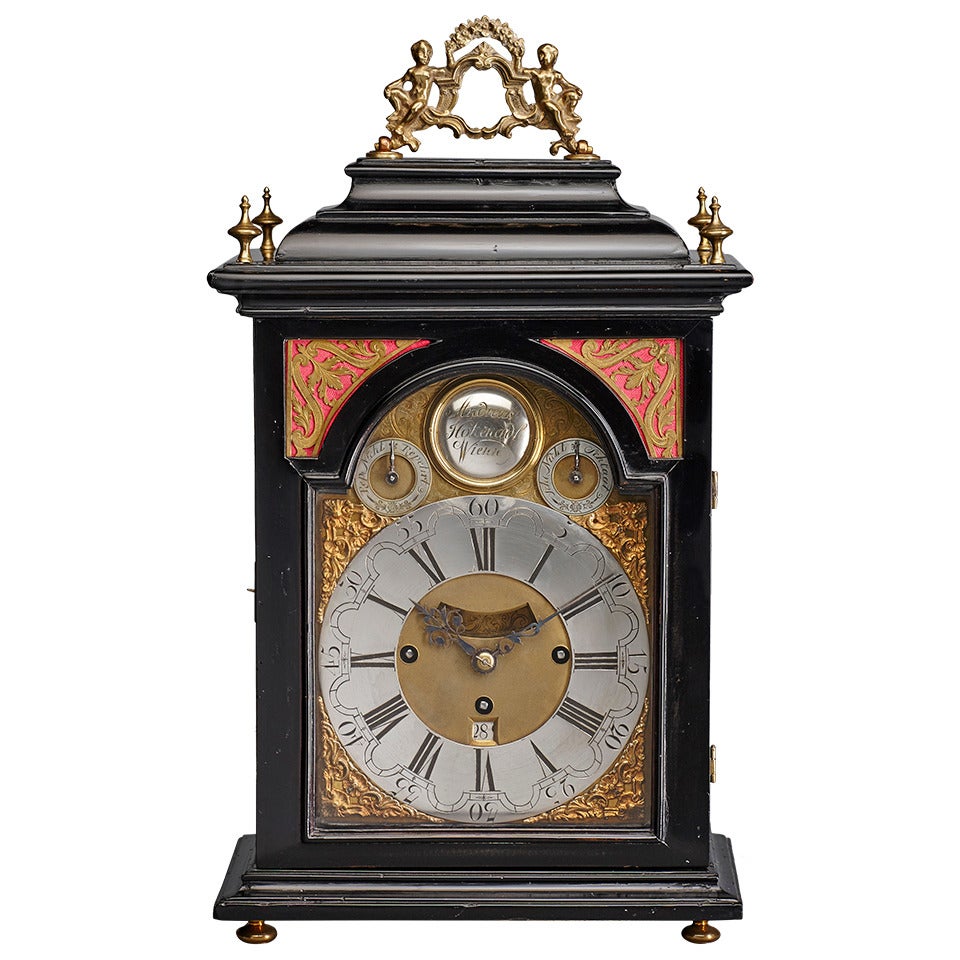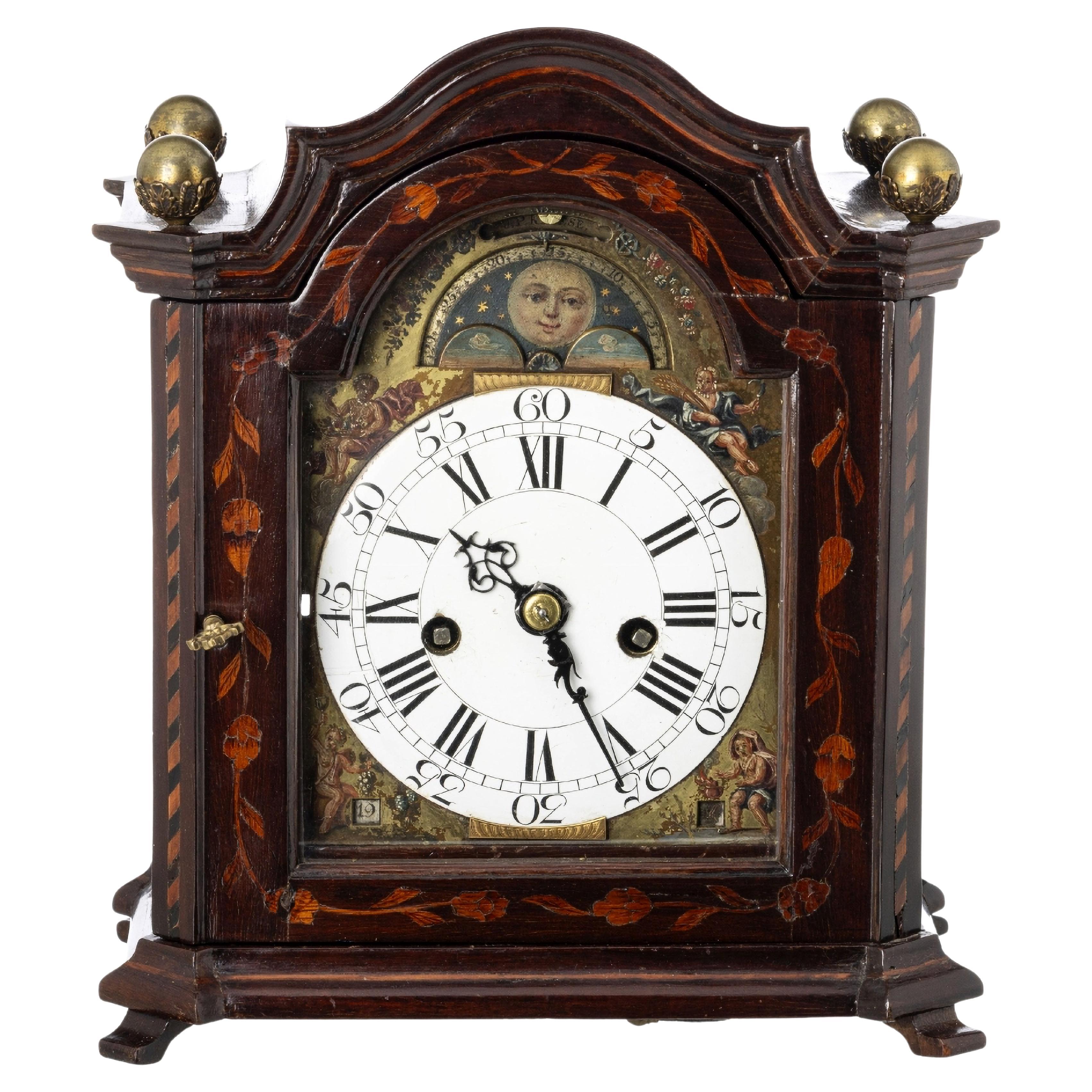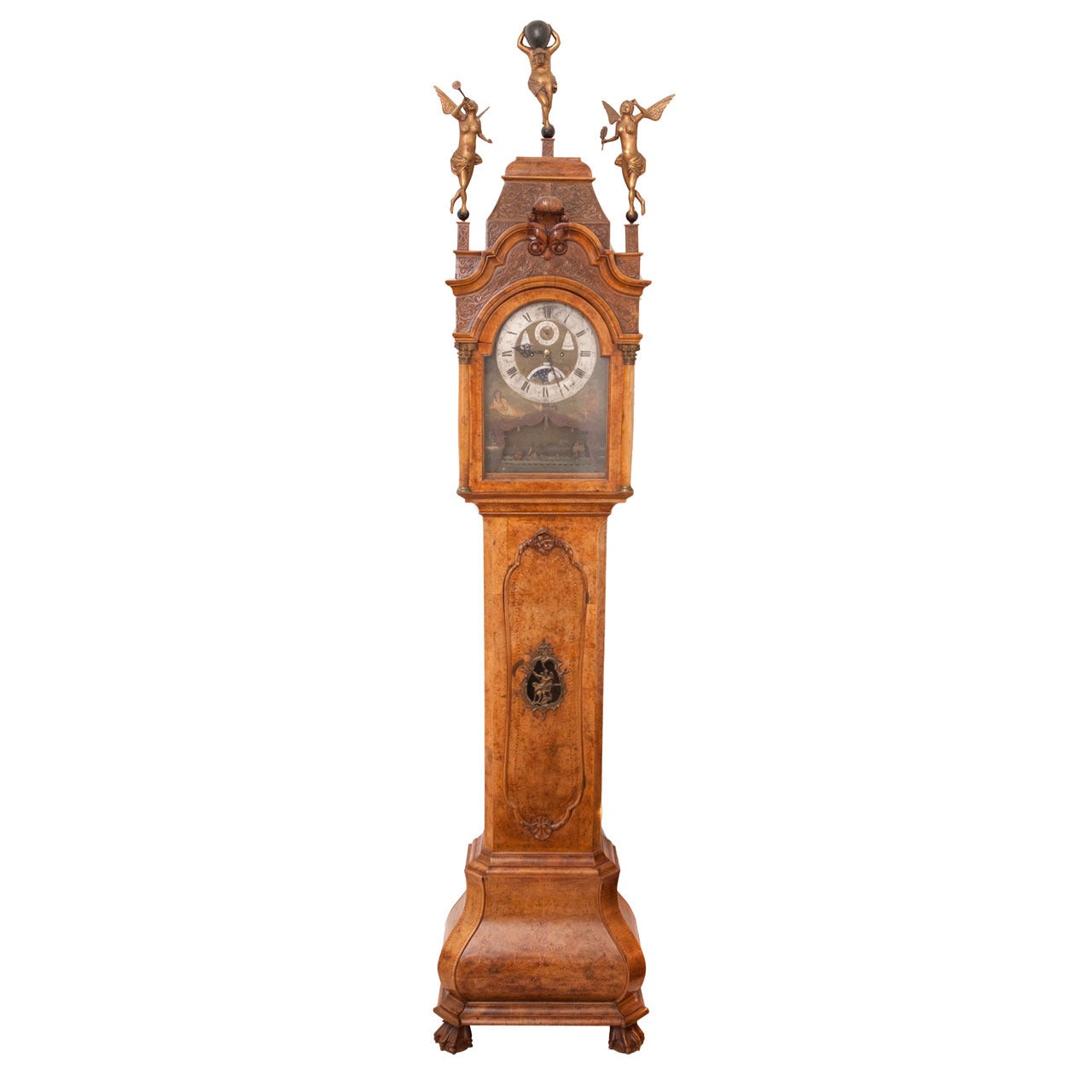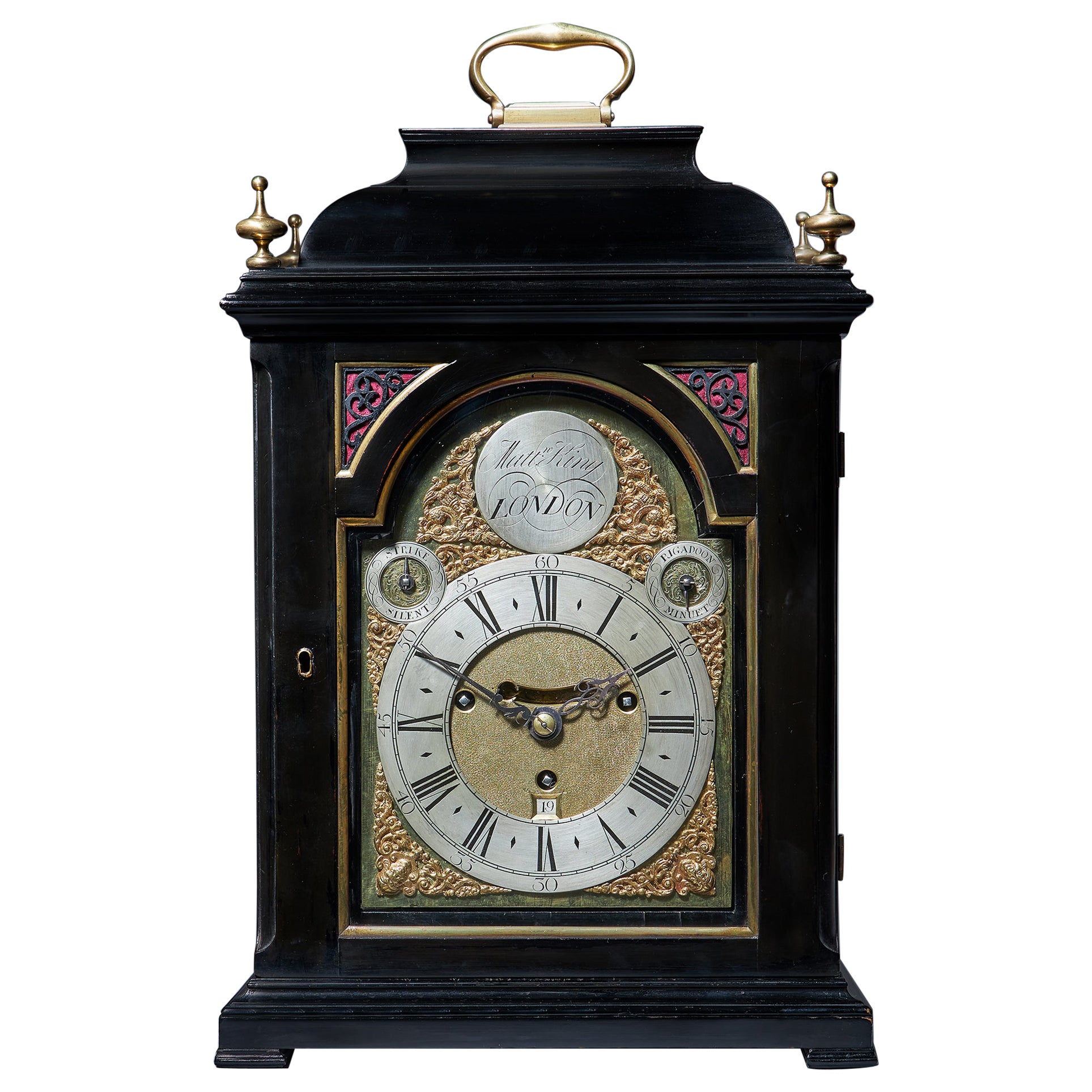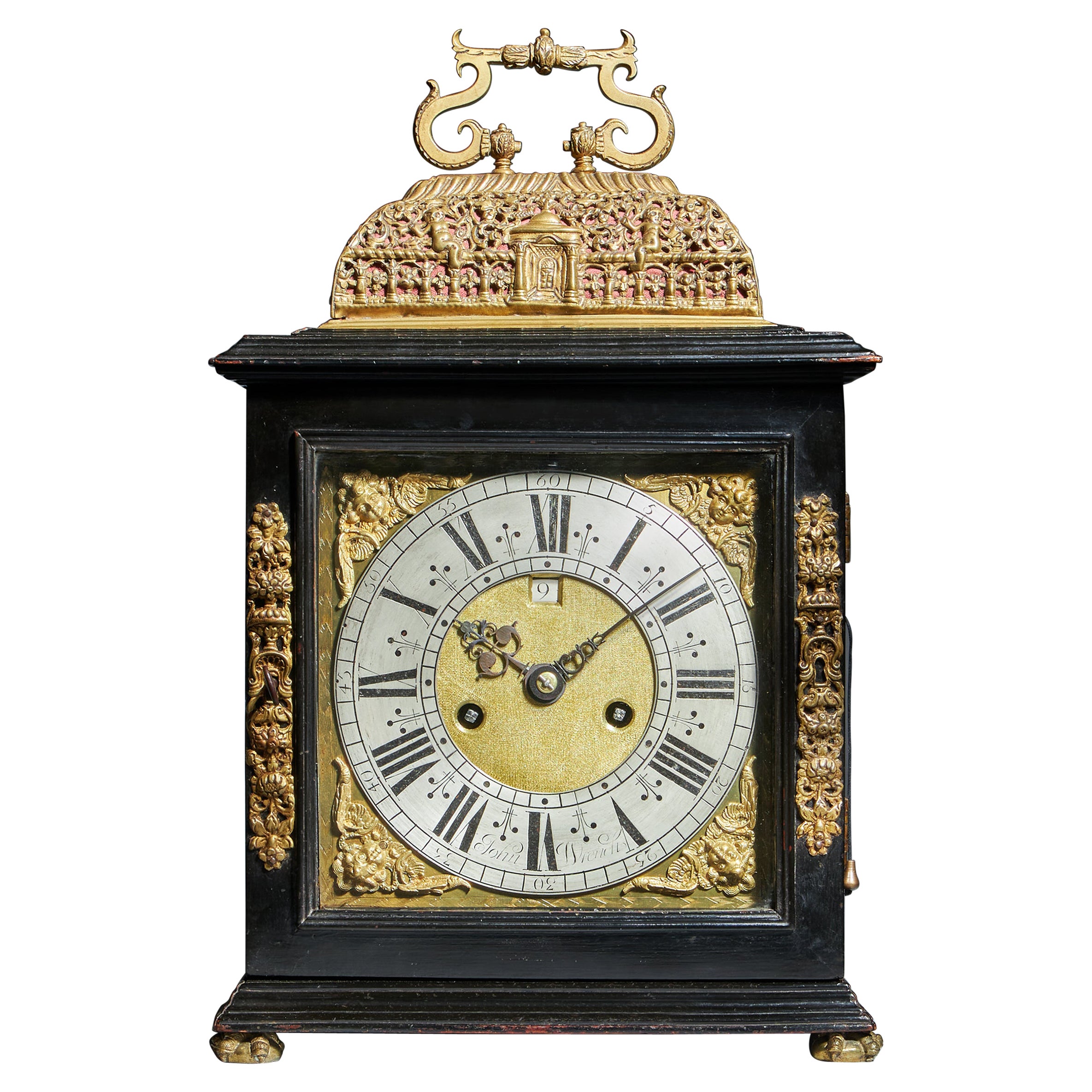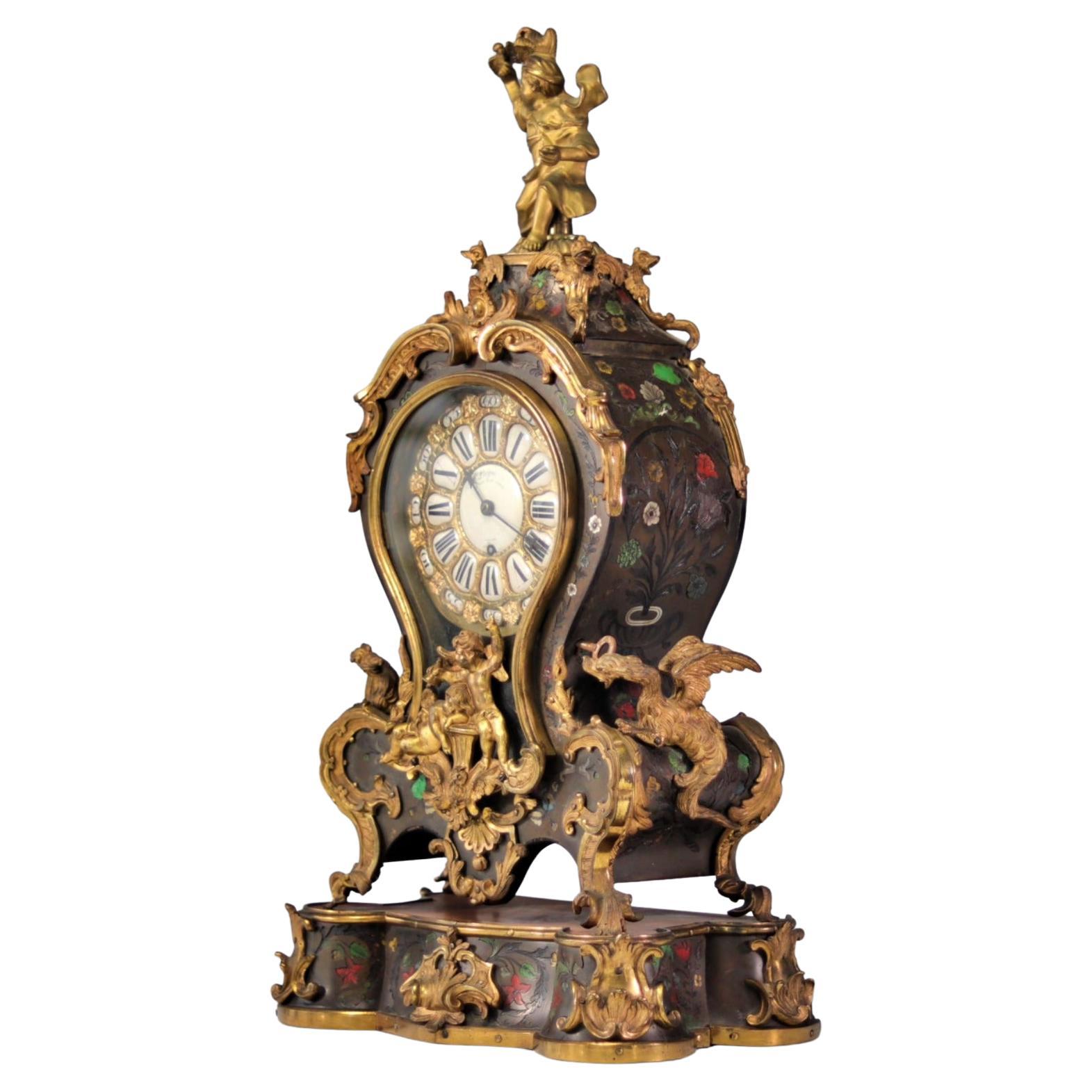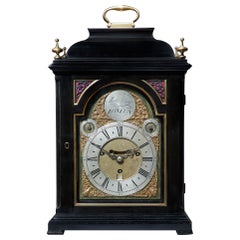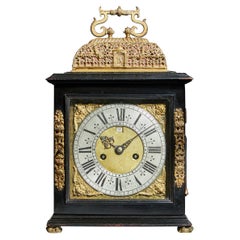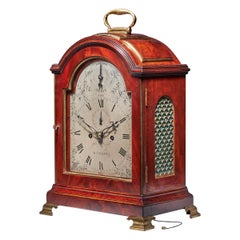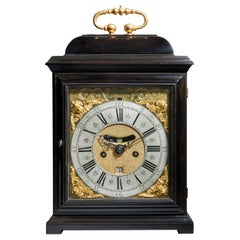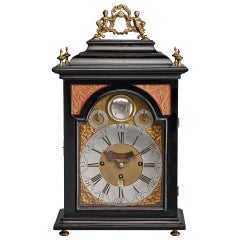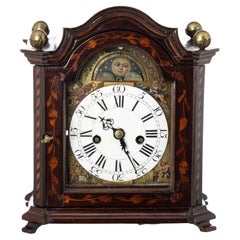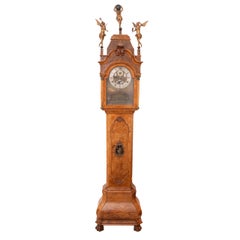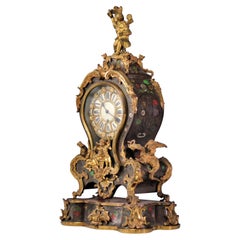Items Similar to 17th Century Hague Clock Signed by Pieter Visbagh, circa 1675
Want more images or videos?
Request additional images or videos from the seller
1 of 11
17th Century Hague Clock Signed by Pieter Visbagh, circa 1675
$80,180.06
£60,000
€69,594.37
CA$113,015.81
A$124,113.29
CHF 64,814.28
MX$1,481,343.61
NOK 821,134.87
SEK 765,330.02
DKK 519,779.30
About the Item
Unusually small Hague clock made c. 1675 by Pieter Visbagh, who was apprenticed by Salomon Coster. The latter made the first pendulum clock according to the instructions of Christiaan Huygens, the internationally renowned scientist who developed the idea of applying a pendulum to a clock movement.
The delicate ebony-veneered case has a moulded broken arch pediment, whilst the door is flanked by plain half round Doric capital-capped columns on high bases. A traditional star adorns the internal face of the case surrounded by well-chosen cuts of olive in a parquetry fashion. This design of star was also popular in England around this time and was almost certainly introduce by the Huguenots.
The two-day movement is driven by a compact single barrel. The going train has its original verge escapement with a silk suspended pendulum between cycloidal cheeks, also a design by Huygens to improve the trajectory of the pendulum bob. The sides of the backcock are richly pierced and engraved. The striking train is regulated by an external pierced countwheel with a blued steel backing on the backplate to create a lovely contrast; the last hour struck is indicated by Arabic numerals. The striking, which has elaborately pierced striking gates, sounds the hours on a bell inside the case, which has a sound fret in the bottom. The backplate is signed at the bottom by the maker: Pieter Visbagh Fecit Haghe.
The velvet-covered brass dial is hinged on the left hand side, giving access to the movement, which has an almost bronze-like patina caused by age. It has a fine skeletonised gilt-brass Roman chaptering with half hour and Arabic minute divisions. The time is indicated by a fine pair of original gilt brass hands, the hour hand delicately pierced. Below is a shaped and chased signature cartouche, consisting of a crowned coat of arms held by two putti. It bears the maker’s name: P. Visbag Haghe. It is hinged at the top and upon lifting a rectangular hole is revealed through which the pendulum can be activated.
Dimensions: height 35 cm; width: 24 cm; depth: 13 cm
- Creator:A. Petersen & Co. (Clockmaker)
- Dimensions:Height: 13.78 in (35 cm)Width: 9.45 in (24 cm)Depth: 5.12 in (13 cm)
- Style:Baroque (Of the Period)
- Materials and Techniques:
- Place of Origin:
- Period:
- Date of Manufacture:1675
- Condition:Wear consistent with age and use.
- Seller Location:Oxfordshire, GB
- Reference Number:1stDibs: LU4936216414211
About the Seller
5.0
Recognized Seller
These prestigious sellers are industry leaders and represent the highest echelon for item quality and design.
1stDibs seller since 2019
24 sales on 1stDibs
Typical response time: 14 hours
Associations
LAPADA - The Association of Arts & Antiques Dealers
- ShippingRetrieving quote...Shipping from: Oxfordshire, United Kingdom
- Return Policy
More From This Seller
View AllRare 18th Century George II Musical Table Clock by Matthew King, circa 1735
Located in Oxfordshire, United Kingdom
A rare George II musical table clock by Matthew King, circa 1735.
This unusual eight-day spring-driven table clock was made by Matthew King, wh...
Category
Antique 18th Century English George II Table Clocks and Desk Clocks
Materials
Silver, Brass
17th Century English eight-day spring-driven table clock, by John Wrench
Located in Oxfordshire, United Kingdom
A Rare Late 17th Century English Basket-Top Spring Clock by John Wrench of Chester, Circa 1695-1700. England
This exquisite late 17th-century English basket-top table clock, signed ...
Category
Antique 17th Century English William and Mary Table Clocks and Desk Clocks
Materials
Brass
18th Century George III Figured Mahogany Three Pad Stricking Bracket Clock
Located in Oxfordshire, United Kingdom
18th century George III figured mahogany three pad bracket clock by John Wright Dorking, Circa 1780. England
A most attractive English bracket clock, made around 1780, signed on ...
Category
Antique 18th Century English George III Table Clocks and Desk Clocks
Materials
Brass
A rare 17th century English eight-day spring-driven table clock by J Gerrard
Located in Oxfordshire, United Kingdom
A Rare Late 17th Century English Eight-Day Spring-Driven Table Clock, Circa 1700. England
Signed J. Gerrard.
This exceptional late 17th-century English eight-day table clock is a s...
Category
Antique 17th Century English William and Mary Table Clocks and Desk Clocks
Materials
Brass
A 17th Century William and Mary eight-day table clock by Isaac Lowndes, 1695
Located in Oxfordshire, United Kingdom
A fine William and Mary eight-day spring-driven table clock signed on the backplate, Isaac Lowndes Pallmall Court, c.1695.
The elegantly proportioned ebony-veneered oak domed top c...
Category
Antique 17th Century English William and Mary Table Clocks and Desk Clocks
Materials
Brass
A Rare and Important Charles II 17th Century Table Clock by Henry Jones
By Henry Jones
Located in Oxfordshire, United Kingdom
The Rare and Important 17th Century Spring Driven Table Clock by the Celebrated Maker, Henry Jones.
Provenance dating back to 1745. Owned by Captain Alexander Raitt
A very rare an...
Category
Antique 17th Century English Charles II Table Clocks and Desk Clocks
Materials
Brass
You May Also Like
Austrian 18th Century Baroque Period Bracket Clock, Signed Andreas Hohenadl
Located in Worpswede / Bremen, DE
An attractive Austrian mid-18th century Baroque period quarter-striking bracket clock by the maker Andreas Hohenadl (1714-1793), Vienna. The ebonised fruitwood case with figurative b...
Category
Antique Mid-18th Century Austrian Baroque Clocks
Materials
Brass
$8,226 Sale Price
21% Off
TABLE CLOCK Dutch, around 1740 18th Cent.Machine marked" J.P. Kroese" Amsterdam
Located in Madrid, ES
TABLE CLOCK
Dutch, around 1740
with mahogany wood case with bronze applications, satinwood inlaid representing vegetal and geometric motifs. Enamelled dial with Roman and Arabic num...
Category
Antique Mid-18th Century Dutch Baroque Table Clocks and Desk Clocks
Materials
Wood
Tall Case Amsterdam Clock, Signed Pieter Verlaer, circa 1840-1860
Located in INTERLAKEN, NY
Tall case Amsterdam clock.
Signed Pieter Verlaer,
Dutch, circa 1840-1860.
walnut and burled walnut.
Clock has an amazing dial with three ships that mov...
Category
Antique 19th Century Dutch Rococo Revival Clocks
Materials
Walnut
Rare 18th Century English Clock
Located in Madrid, ES
Rare 18th century English clock
Marquetry
Weight: 9.20 kg
England
Sizes: H 62cm L 31cm
very good condition.
Category
Antique 18th Century English British Colonial Table Clocks and Desk Clocks
Materials
Bronze
Baroque Wall Clock in a Biedermeier Case, 18th/19th Century
Located in Greding, DE
A "marriage" combining a Baroque bronze wall clock with a Biedermeier case in the form of a temple. The case, crafted from birch, merges the ornate design of the Baroque period with ...
Category
Antique 19th Century European Biedermeier Wall Clocks
Materials
Bronze
Magnificent 18th Century Striking Dutch Amsterdam Longcase Clock
Located in Warsaw, PL
An impressive Dutch longcase clock with a burr walnut veneered oak case, signed on the chapter ring F. VAN CEULEN UTRECHT. The hood of this clock ...
Category
Antique 18th Century French Other Grandfather Clocks and Longcase Clocks
Materials
Wood
$29,378 Sale Price
28% Off
More Ways To Browse
Small Clock
Signed By Oliver
Pendulum Clock Movement
Wall Clock Made In Germany
Vintage Wall Clock Wood Wall Clocks
Black Face Antique
Howard Midcentury Modern
America Clock
Cartel Clocks
Gold Wall Clock
Vintage Electric Clocks
Large Wall Clock Used
Antique Regulator
French Clock Louis Wall
Antique Bronze Wall Clocks
Antique French Cartel Clocks
Austria Clock
Austrian Clocks
